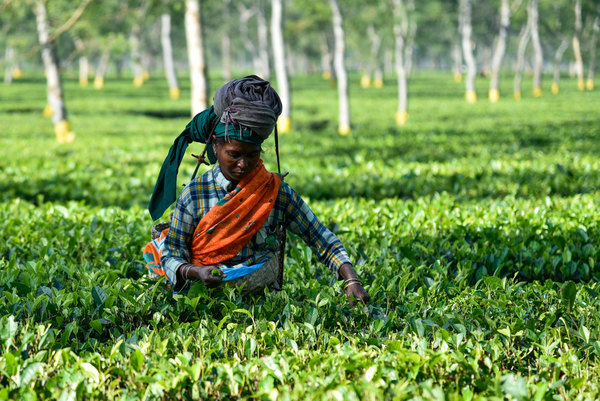Climate to exacerbate food insecurity in tropics: report
Areas where food supplies could be worst hit by climate change have been identified in a report from the CGIAR Research Program on Climate Change, Agriculture and Food Security (CCAFS). The report matches future climate change "hotspots" with regions already suffering chronic food problems to identify highly-vulnerable populations, chiefly in Africa and South Asia, but…
Forest biodiversity – The International Day for Biological Diversity 22 May 2011
Forests and forest biodiversity is the theme for this year's International Day of Biodiversity (IDB), on Sunday 22nd May 2011; because 2011 is also the International Year of Forests. This is also the year the UN Convention on Biological Diversity (CBD) launched the official Decade on Biological Diversity website.
Developing crops for mild drought tolerance
Whilst we continue to have no rain in southern England (I’m sure this won’t last too long…), drought tolerance must be on the mind of many farmers. World reports on climate change and food security have identified water scarcity as a critical factor for agriculture this century. Breeding for drought tolerance is a major research…
Burning issues – Will a changing climate increase the incidence of wild fires?
Are wildfires going to be a common occurrence due to global warming and climate change? This is a subject discussed in a report presented this week at the 5th International Wildland Fire Conference in Sun City, South Africa. The report, entitled "Findings and Implications from a Coarse-Scale Global Assessment of Recent Selected Mega-Fires", examined recent…
Deepwater Horizon oil spill one year on – How have birds and marine life been affected?
The process of tallying and logging the harm the oil spill in the Gulf of Mexico might have done to wildlife is still underway, one year after the disaster. However, indications are that the spill has not been as catastrophic as the worst predictions, but dead animals are still washing up on beaches.
Using satellites to map forests’ carbon stock
An estimated 20% of the world’s anthropogenic emissions of CO2 derive from deforestation and degradation of tropical forests. Nonetheless, data and hence knowledge on the condition and coverage of these forests is incomplete, which makes it impossible to accurately monitor future changes. For this reason, the Woods Hole Research Center has initiated a three-year project…
Alternative energy sources – is wind the answer?
The damage caused to the Fukushima nuclear power plant by the earthquake and tsunami recently raised safety issues to a supposedly clean energy. The past twelve months have seen concerns with the traditional and dwindling traditional forms of energy; for example the coal mining accidents in Chile, New Zealand and China, oil and gas…
The global climate in 2010 – was the globe really at its warmest?
Image from WMO report A statement published last week by the World Meteorological Organization (WMO) describes global temperature and aspects of the global climate in 2010. The “WMO Statement on the Status of the Global Climate” series was launched in 1993, at the beginning of climate awareness generated by the Second World Climate Conference, which…
Climate of changing public opinion
This week is Climate Week in the UK, which aims to get the public involved in thinking about climate change. In the scientific community, there is an increasing level of consensus about climate change and the need to take drastic action to limit severe consequences. However, in order to introduce challenging policies, there must be…
Natural hazards – how do we know when they’re coming?
The earthquake that hit Japan’s northeast coast today had a magnitude of 8.9 in the Richter scale and generated a 4-metre tsunami that swept boats, cars, buildings and tons of debris miles inland. Fires triggered by the quake burned out of control up and down the coast. Only a couple of days ago, I…


